solderdude
Administrator
measureutternutter
Posts: 4,886
|
Post by solderdude on Oct 29, 2016 8:58:09 GMT
updated the supported headphone list with more modules:
AKG K612 (K601) (lowers treble peaks and adds subbass)
AKG K701 (removes the 2kHz treble peak, lowers the upper treble and adds missing bass)
AKG K702 (removes the 2kHz treble peak, lowers the upper treble and adds missing sub bass)
AKG K712 (adds subbass, lowers warmth a tiny bit, removes slight treble peak)
AKG K7xx (adds subbass, lowers warmth a tiny bit, removes slight treble peak)
AKG K812 (adds subbass, lowers warmth somewhat, removes slight treble peak)
Audeze LCD2 / LCD2 rev2 (adds slight subbass and improves clarity, removes treble peak) NOT for Fazor versions
Audeze LCD3 (adds slight subbass and improves clarity, removes treble peak) NOT for Fazor versions
audio technica ATH-M40X (lowers bass hump and treble peak and extends subbass)
Beyerdynamic DT770-Pro 250 (lowers the bass slightly and removes the treble peak)
Beyerdynamic DT990-600 (old version) (lowers the bass and treble 'hump' and extends subbass)
Beyerdynamic DT990-Pro 250 (lowers the bass and treble 'hump' and extends subbass)
Beyerdynamic DT1350 with EDT1350-NL/SL pads (adds the (sub)bass that is removed by the larger pads)
Denon AH-D2000 (removes the treble issues, improves clarity/presence)
Modified Fostex T50RP is ONLY intended for T50RP's with SRH940 pads fitted)
Fostex T50RP stock (adds bass and midbass bloom, extends treble and removes treble peak)
Fostex T50RP with HM5 velourspads (adds bass, extends treble and removes treble peak)
Fostex TH-X00 (adds subbass, lowers midbass and removes the slight treble peak)
Mr Speakers Alpha Dog (adds some clarity and adds 'sparkle' up top)
HiFIMan HE5 (adds some clarity and equalizes the treble peak)
HiFIMan HE6 (adds some clarity and removes the treble peak)
HIFIMan HE350 (adds subbass and removes treble peak)
HiFIMan HE400i (adds bass and warmth, removes the treble peak)
HiFIMan HE500 (adds some clarity and removes the treble peak)
HiFIMan HE560 (adds some subbass, clarity and removes the treble peak)
Philips SHP9500 (adds some bass and body and clarity, removes some treble)
Philips Fidelio X1 (adds some sub bass and clarity)
Philips Fidelio X2 (increases clarity and removes treble peak)
Philips A5Pro stock pads (corrects the overall tonal balance towards a more Hi-Fi signature)
Philips A5Pro velours pads (adds some sub bass, clarity and treble extension)
Sennheiser Momentum OVER-ear (shaves off some bass, adds sparkle up top and extends sublows)
Sennheiser HD555 / HD595 (adds some subbass)
Sennheiser HD598 ( adds some subbass and lowers treble peak)
Sennheiser HD580 / HD600 (extends subbass, removes slight upper mids peak)
Sennheiser HD650, old (black driver, old pads) version (extends subbass, removes excess 'warmth')
Sennheiser HD650, new (silver driver, new pads) version (extends subbass)
Sennheiser HD700 (adds subbass, lowers warmth, removes treble peak)
Sennheiser HD800 (adds (sub)bass and removes the 6kHz treble peak and some of the 10kHz peak)
Sony MDR-1A (removes overly warm signature and slight edge, overall improvement in clarity)
Sony MDR-Z7 (removes overly warm signature and adds upper treble extension)
Superlux HD681-EVO (removes excessive warmth and small peak in the treble)
|
|
oldson
extremely active
Posts: 1,678
|
Post by oldson on Oct 29, 2016 9:56:29 GMT
But two is more and more is better! HA! Kidding - Frans had the same suggestion right away too. Played with the design and indeed - better  Everything is inbound  As the web-page says, CNC chassis orders will likely be a bit delayed. It is quite a project to CNC them > add the grain to the aluminum > then anodize them > then machine them again and finally laser etch them. If delays end up looking bad, I will ship in acrylic and then CNC as soon as they arrive (not a long delay expected on CNC, week or two at most) looks worth the wait!! |
|
|
|
Post by jhelms on Nov 3, 2016 15:28:07 GMT
Just an update - will email separate of course:
- Had an unexpected small delay in the PCB's that I was just informed about. Basically the manufacturer had a difficult time for whatever reason sourcing the gold used in the process. And had a difficult time communicating this as I was told they shipped. I expected the boards in a few days ago, but tracking is showing Monday. Second they are in, I will be building up / testing units and getting them out the door (acrylic orders)
- Still waiting on confirmation of a delivery time on CNC chassis but as I mentioned, worst case I will ship in acrylic so you get your hands on them quick and then send CNC once they get in!
|
|
|
|
Post by jhelms on Nov 8, 2016 18:56:48 GMT
And.... the first batch is finished  Working filter modules currently and Kameleons will start invading the globe starting tomorrow morning! 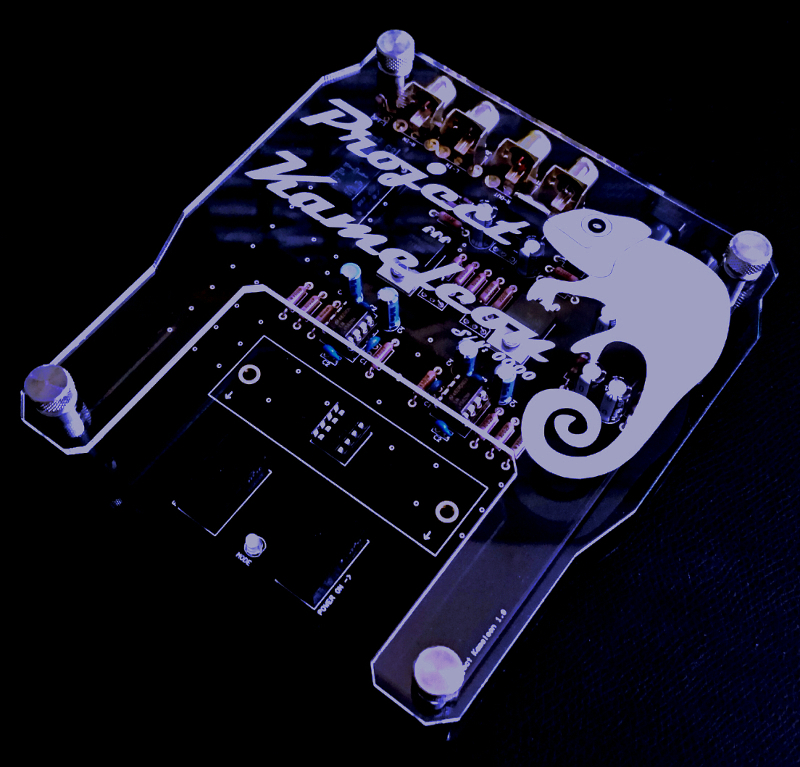 |
|
|
|
Post by llyhir on Nov 10, 2016 11:12:04 GMT
Hi everyone,
greetings from the Czech republic! I am very much interested in purchasing Kameleon including multiple modules but would like to receive feedback on the following points before making a final decision:
1) How many modules can be installed at once into a single Kameleon device? I assume one but would like to have this confirmed. In case more than one, any manual switching is possible between the inserted modules?
2) How long does it roughly take to exchange one module for another? What particular steps must be performed to do so? (any screwing/unscrewing, switching the device on/off and other time-consuming steps?) I need to be able to switch modules conveniently since I am planning to use multiple headphones for listening. (HE500, HE6 and HD800 for instance)
3) Is there a 'flat' module or any sort of bypass functionality included? If yes, does Kameleon need to be ON (active) in order for the bypass function to work properly?
4) Could you please provide any technical details on the proclaimed Bass boost module? Does it provide any options to manually increase and decrease its effect (onboard switches/jumpers)?
5) Could you please provide any technical details on the proclaimed Crossfeed module? Does it provide any options to manually increase and decrease its effect (onboard switches/jumpers)?
6) In case the Crossfeed module discussed above is available and only one module at once can be installed into single Kameleon device, I assume two separate Kameleon devices would need to be purchased in order to insert two modules into my audio chain (e.g. to equalize and crossfeed at the same time).
7) Are there any internal diodes or other sources of light taking part in the Kameleon design? I am trying to determine whether CNC'd (non-transparent) chassis would shield me from any excessive light coming from the device (especially during nights), or not.
8) Any revisions planned to come? Since I would eventually need to ship overseas from the Czech republic to US ( => significant shipment costs, additional custom clearances, weeks of waiting etc.), I do not want to be sending the Kameleon to you after one month of ownership (just like it happened to Project Polaris early adopters from my understanding).
9) Not very important but Koss ESP950 may be a good candidate for an EQ module. It is a relatively affordable and neutralish electrostatic headphone (subbass boost would help), accessories include dedicated amplifier and price/performance ratio is IMHO very good. That said, the phone is fragile, pads are of a very poor quality and QC is far from reliable. Though the lifetime warranty somewhat helps here.
Thank you in advance for your response and time!
|
|
jello
extremely active
Posts: 1,569
|
Post by jello on Nov 10, 2016 11:37:01 GMT
1) How many modules can be installed at once into a single Kameleon device? I assume one but would like to have this confirmed. In case more than one, any manual switching is possible between the inserted modules? One module at a time.2) How long does it roughly take to exchange one module for another? What particular steps must be performed to do so? (any screwing/unscrewing, switching the device on/off and other time-consuming steps?) I need to be able to switch modules conveniently since I am planning to use multiple headphones for listening. (HE500, HE6 and HD800 for instance) Very quick to change. Remove top plate (held with thumbscrews), then remove the module from the PCB (also held with thumb screws), swap modules over ('plug & play') and then tighten the thumb screws again. I always powered off before swapping modules but not sure it if is 100% necessary or not (with power running through the unit I feel it is safer).
3) Is there a 'flat' module or any sort of bypass functionality included? If yes, does Kameleon need to be ON (active) in order for the bypass function to work properly? The Kameleon has a flat 'mode' (not a module per se) where it will bypass the filter module's EQing. The Kameleon needs to have it's power switch ON regardless of whether you are using or bypassing the module.Hi llyhir! I can only really answer the first three questions (comments in bold above) but it'll at least allow Frans or Jeremy to concentrate on the others for you. Hope this helps  |
|
solderdude
Administrator
measureutternutter
Posts: 4,886
|
Post by solderdude on Nov 10, 2016 16:31:19 GMT
1) How many modules can be installed at once into a single Kameleon device? I assume one but would like to have this confirmed. In case more than one, any manual switching is possible between the inserted modules? just 1 2) How long does it roughly take to exchange one module for another? What particular steps must be performed to do so? (any screwing/unscrewing, switching the device on/off and other time-consuming steps?) I need to be able to switch modules conveniently since I am planning to use multiple headphones for listening. (HE500, HE6 and HD800 for instance) within one minute. set switch to 'bypass' You need to unscrew 2 screws (I never screw them down myself so this part you could skip) lift out the module. put in a new one. screw down (or not). switch to 'filter on' again. 3) Is there a 'flat' module or any sort of bypass functionality included? If yes, does Kameleon need to be ON (active) in order for the bypass function to work properly? No need for a flat module. the switch can be set to bypass. 4) Could you please provide any technical details on the proclaimed Bass boost module? Does it provide any options to manually increase and decrease its effect (onboard switches/jumpers)? No options it is fixed, it just lifts bass. I could provide plots of what they lift and how much. You can choose it when ordering. Do note that different headphones need different bass lifts in both frequency and amount. 5) Could you please provide any technical details on the proclaimed Crossfeed module? Does it provide any options to manually increase and decrease its effect (onboard switches/jumpers)? No way to adjust. Working on X'feed still. 6) In case the Crossfeed module discussed above is available and only one module at once can be installed into single Kameleon device, I assume two separate Kameleon devices would need to be purchased in order to insert two modules into my audio chain (e.g. to equalize and crossfeed at the same time). Yep. 7) Are there any internal diodes or other sources of light taking part in the Kameleon design? I am trying to determine whether CNC'd (non-transparent) chassis would shield me from any excessive light coming from the device (especially during nights), or not. ' One biclour LED indicating 'filter-in' or 'bypass' The LED cannot be jumpered on/off or set in brightness. Well... you could change resistors to change the brightness or just black it out. 8) Any revisions planned to come? Since I would eventually need to ship overseas from the Czech republic to US ( => significant shipment costs, additional custom clearances, weeks of waiting etc.), I do not want to be sending the Kameleon to you after one month of ownership (just like it happened to Project Polaris early adopters from my understanding). No revisions planned. 9) Not very important but Koss ESP950 may be a good candidate for an EQ module. It is a relatively affordable and neutralish electrostatic headphone (subbass boost would help), accessories include dedicated amplifier and price/performance ratio is IMHO very good. That said, the phone is fragile, pads are of a very poor quality and QC is far from reliable. Though the lifetime warranty somewhat helps here. The ESP950 could do with some bass lift. The right 'bass boost' module would suffice. There are not too many measurements I could base a filter on unless I had one to measure. Could also reduce the 6kHz peak (if really present)  The problem with electrostats is they generally don't respond well to bass boost. Simply because the membrane of a stat is highly tensioned and cannot make the large swings needed for a higher SPL bass levels. I had Stax that didn't react well to EQ in the bass. It would only sound better at lower levels. For magenetic planars this is less of a problem and membranes can have a looser tension. |
|
|
|
Post by llyhir on Nov 10, 2016 18:10:35 GMT
Thank you a lot jellofund and solderdude, your responses are incredibly helpful! Thinking about ESP950 a bit more, I would say the bass boost module should suffice (6-7k peak is non-issue IMHO, the phone just feels neutral from upper bass above). That inherent 'stat' coloration cannot be EQ'ed out anyway! I could provide plots of what they lift and how much. You can choose it when ordering. Do note that different headphones need different bass lifts in both frequency and amount. Could you please provide the plots so that I can decide whether any of the bass boost options would be worth ordering for me, or not? Thanks a lot |
|
|
|
Post by jhelms on Nov 10, 2016 20:43:33 GMT
Hey guys... To give some more info on the G1217 version of Kameleon. Modules are a little different.... (still can be used in other versions of Kameleon / just remove thumb screws and standoffs - or remove standoffs from other Kameleon versions) - Each module has thumb screws and proper length standoffs attached to the module itself. The standoffs provide support and thumb screws make them easy to grip to remove the module and place a module - Now if someone for some reason wants to bolt the module in place, there are two holes in the bottom of the chassis and two holes in the PCB so you can then bolt the module down (I cannot see a need for this on a desktop device) So in short, this is what the G1217 modules look like and what you receive. 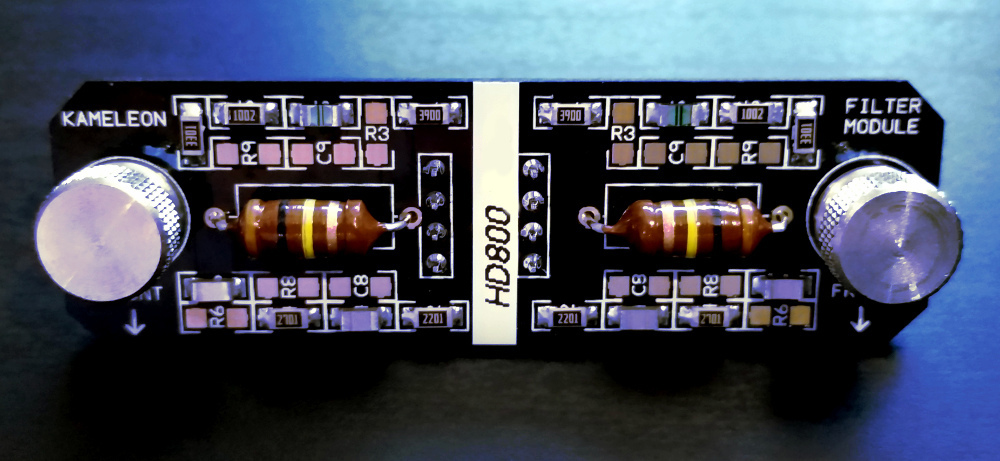 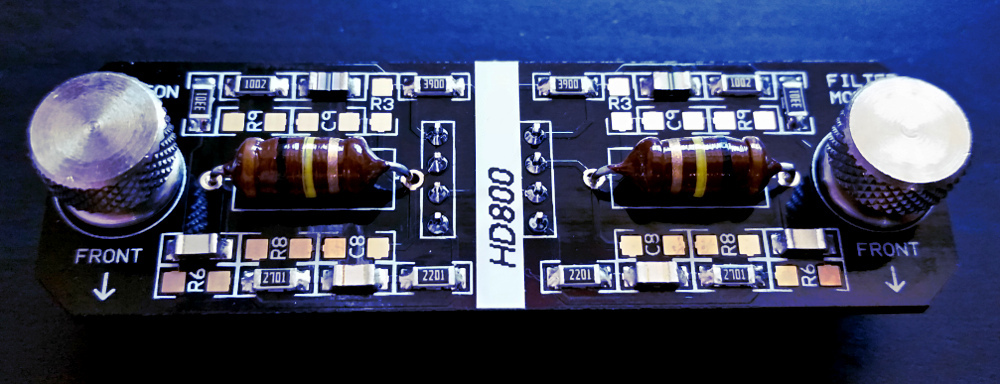 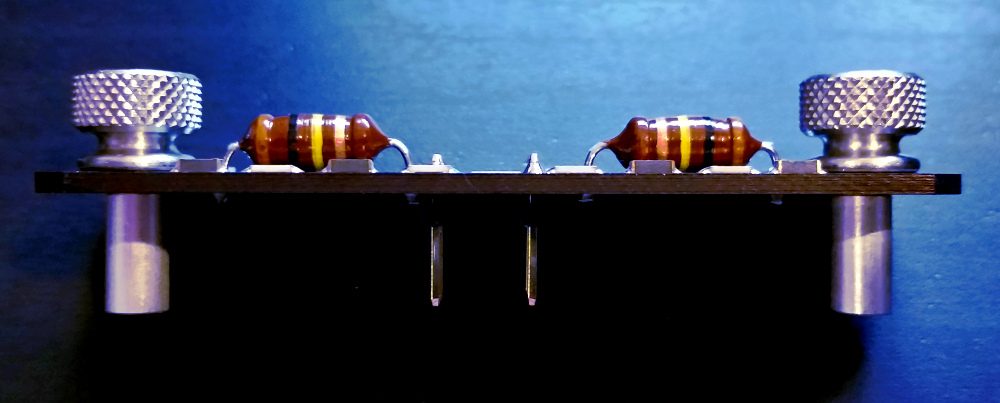 Sorry for the poor quality phone photos, no time to break out the nice camera. Been up to my eyeballs in modules - building non-stop all week! |
|
jello
extremely active
Posts: 1,569
|
Post by jello on Nov 10, 2016 22:47:11 GMT
Hey guys... To give some more info on the G1217 version of Kameleon. Modules are a little different.... (still can be used in other versions of Kameleon / just remove thumb screws and standoffs - or remove standoffs from other Kameleon versions) - Each module has thumb screws and proper length standoffs attached to the module itself. The standoffs provide support and thumb screws make them easy to grip to remove the module and place a module - Now if someone for some reason wants to bolt the module in place, there are two holes in the bottom of the chassis and two holes in the PCB so you can then bolt the module down (I cannot see a need for this on a desktop device) So in short, this is what the G1217 modules look like and what you receive. Looking good Jeremy! Would I be right to assume that the standoffs you use on the G1217 modules can be removed using an allen (hex) key? Cheers. |
|
|
|
Post by jhelms on Nov 11, 2016 0:38:40 GMT
Hey guys... To give some more info on the G1217 version of Kameleon. Modules are a little different.... (still can be used in other versions of Kameleon / just remove thumb screws and standoffs - or remove standoffs from other Kameleon versions) - Each module has thumb screws and proper length standoffs attached to the module itself. The standoffs provide support and thumb screws make them easy to grip to remove the module and place a module - Now if someone for some reason wants to bolt the module in place, there are two holes in the bottom of the chassis and two holes in the PCB so you can then bolt the module down (I cannot see a need for this on a desktop device) So in short, this is what the G1217 modules look like and what you receive. Looking good Jeremy! Would I be right to assume that the standoffs you use on the G1217 modules can be removed using an allen (hex) key? Cheers. No tools required to remove the standoff / thumbscrews. Just hold the standoff tight and twist the thumbscrew counter clockwise  Edit - realized how HUGE the modules look in those photos HA! Showing off micro soldering details hehe... 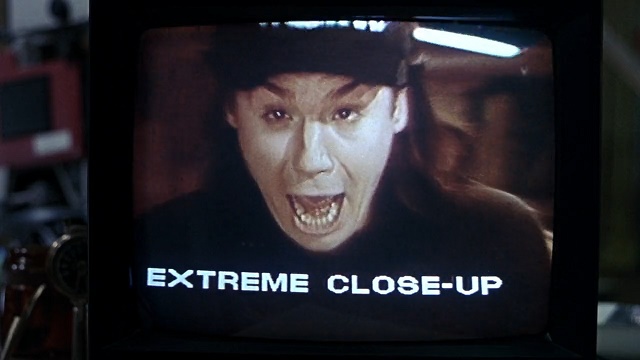 |
|
solderdude
Administrator
measureutternutter
Posts: 4,886
|
Post by solderdude on Nov 11, 2016 6:03:08 GMT
The standoffs were actually designed to prevent the module from being inserted the wrong way around.
Which now they don't do any more.
The posts, when mounted on the Kameleon PCB, are higher than the socket + headers and insure that you cannot push the filter in (due to the offset/asymmetrical design)
They also will help alligning the filter PCB properly on insertion.
When the posts are higher than the socket + headers you can move the filter PCB around (when inserting) and will only be able to drop down further in the right position above the socket.
Also, the nice nuts and bolts, when being delevired with the Kameleon won't add to the costs of each adapter.
These parts aren't cheap after all, now they will just add to the price of the filter and have no other function as you cannot secure the filter in place.
|
|
|
|
Post by jhelms on Nov 11, 2016 17:08:50 GMT
Frans!  Totally understood. However the whole chassis was designed around this idea. The front being totally open - you can see the pins as they drop into the socket and also you can see the standoffs as they make contact with the pads. It is very clear if they are offset or alignment is off. Also with the way the chassis was designed, it does not make it that easy to get the module backwards. You know right away something is off as it sits all weird and to one side clearly. The thumb screws making removing and positioning the module very easy. Once you try it - makes it hard to go back! It will make sense when yours arrives. And you are absolutely right. It did add cost to each and every module. However I set the price on the modules before factoring in setting them up with thumb screws and standoffs. So I decided to eat the cost and not raise the price on the modules. I like them setup this way enough to justify eating it. I carefully selected the standoffs length so that when inserted into the socket, they just touch the pads or are just slightly off them. All comes together perfect. Now for anyone that wants to use g1217 modules with other versions of Kameleon, or if they want to set the G1217 version up with thumb screws locking down the module, it is a very simple re-configuration so no worries. As mentioned, just secure the standoffs to the PCB instead of to the module. Will all be in the manual. |
|
Crispy
very active
Madrigal music is playing - Voices can faintly be heard, "Please leave this patient undisturbed."
Posts: 779 
|
Post by Crispy on Nov 11, 2016 19:40:24 GMT
Edit - realized how HUGE the modules look in those photos HA! Showing off micro soldering details hehe... As usual Jeremy the work is first class with attention to detail being a little OCD  I was looking at my filter module for my DT770 and compared it to yours, well I must say mine is a bag if Sh1te compared to yours. And although I am also a bit OCD with the detail of all the resistor numbers being the same way it is my crap soldering skills that let it down, comparing with yours I have used far too much solder. Will have to try harder next time  |
|
|
|
Post by jhelms on Nov 11, 2016 20:16:07 GMT
Appreciate the compliment but no stress. Small SMD work is hard especially when doing the solder work totally by hand. Just takes a lot of practice and yes - a little solder goes a long ways! It is a little easier for me as I have a solder paste dispenser that dispenses exact amounts per pad. The parts are still hand placed since we are low volume which lets me focus on placement and component direction (the ocd side). Then parts are heated / soldered in an IR oven.
|
|








